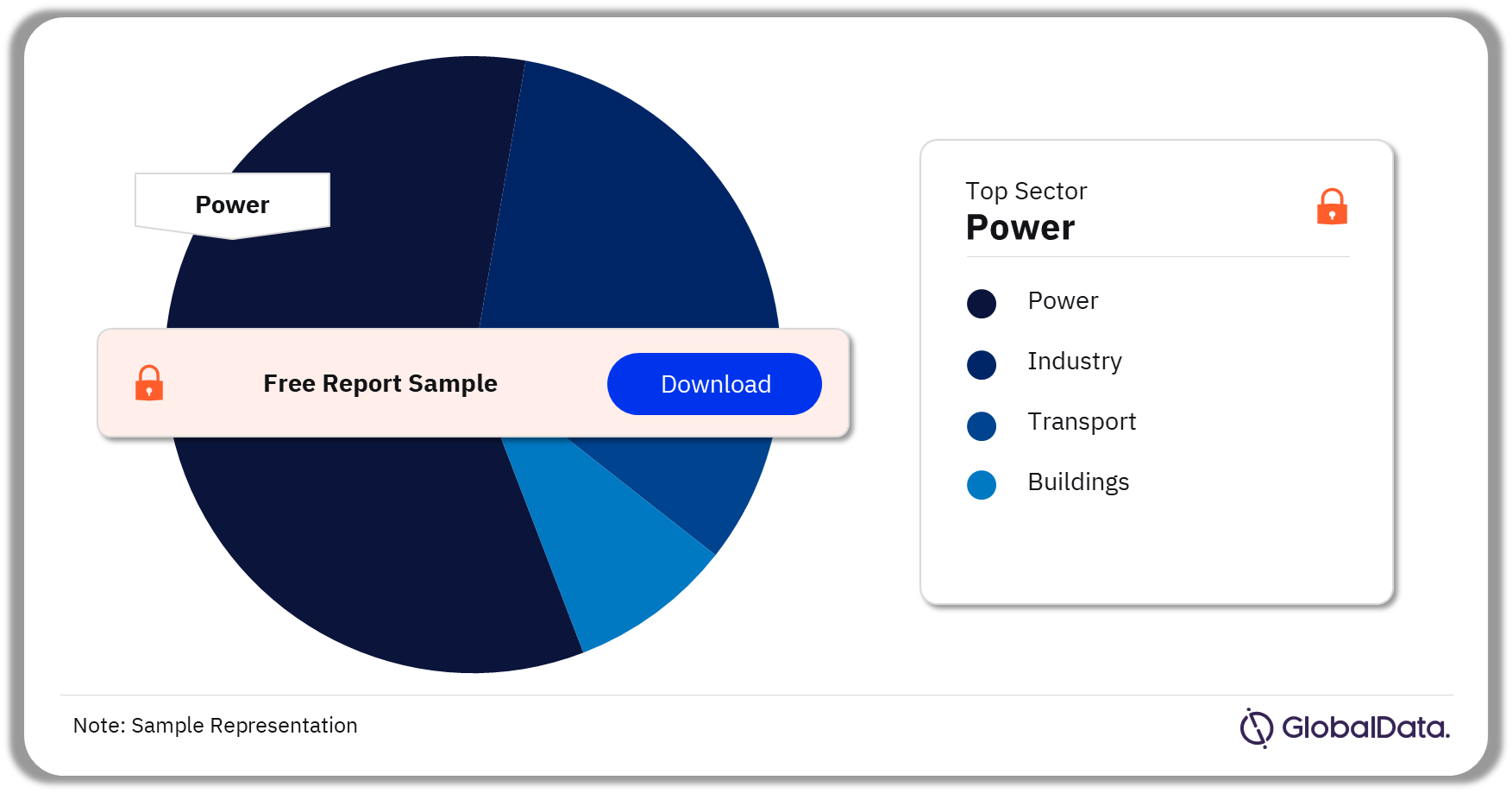Decarbonizing Maritime and Aviation Overview by Key Energy Transition Technologies and Case Studies, 2024 Update
Powered by ![]()
All the vital news, analysis, and commentary curated by our industry experts.
Decarbonizing Maritime and Aviation Market Report Overview
The automotive sector experiences a strong growth in demand for electric vehicles. However, the aviation and maritime sectors have been slow to decarbonize. To incentivize emission reductions, both sectors have set bold net-zero targets. However, according to the IEA, the sectors remain disoriented.
Demand for cost-competitive and energy-dense fuels has led aviation and maritime to represent two of the most difficult to abate sectors. Both sectors will likely need to engage with a combination of energy transition technologies to achieve emissions reductions.
Decarbonizing maritime and aviation market research report assesses the suitability of energy transition technologies that hold decarbonization potential for both sectors. This report also includes a snapshot of emissions disclosures for both sectors’ biggest companies.
| Energy Transition Technologies | · Electrification
· Alternative Fuels · Hydrogen · Carbon Capture · Utilization and Storage (CCUS) |
| Enquire & Decide | Discover the perfect solution for your business needs. Enquire now and let us help you make an informed decision before making a purchase. |
Decarbonizing Aviation and Maritime Market - Energy Transition Technologies
The major energy transition technologies for aviation and maritime are electrification, alternative fuels, hydrogen, carbon capture, utilization, and storage (CCUS).
Electrification: With high rates of efficiency electrification offers potential to cut the carbon emissions of short journeys for both commercial aviation and the shipping industry. However, overall increasing demand for key battery raw materials will experience inter-sector competition for raw materials increase.
Alternative Fuels: The industry adoption of alternative fuels across the aviation and maritime sectors is currently limited. Carbon-based e-fuels or synthetic fuels use renewable energy to produce hydrogen from water and then add captured carbon. Biofuels are made through processing biomass (organic material) and can be used to make sustainable aviation fuels (SAFs) and renewable diesel.
Hydrogen: Hydrogen fuel cells and hydrogen combustion engines offer decarbonization potential for the aviation and maritime industry by replacing hydrocarbon-based fuels with the input of hydrogen. The process produces water and electricity as products. Hydrogen can be converted into ammonia or methanol to make it easier to transport and handle.
Carbon Capture, Utilization and Storage (CCUS): Carbon capture transforms carbon from its gaseous form into a liquid or a solid carbon compound. Carbon dioxide can be taken directly from the atmosphere (direct air capture) or a point source of emissions such as an exhaust.
Additionally, a few start-ups have proposed ways to apply this technology to ships. Applications to aviation remain in early development.
Buy the Full Report for More Energy Transition Technologies Insights in the Decarbonizing Aviation and Maritime Market Download a Free Report Sample
Decarbonizing Maritime and Aviation Market Segmentation by Sector Concerning CO2 Emissions
The key sectors contributing to the CO2 emissions in 2022 in the decarbonizing maritime and aviation market are power, industry, transport, and buildings. According to an IEA analysis of emissions, the power sector was the dominant contributor to global CO2 emissions in 2022.
Within the transport sector, a significant percentage of emissions can be attributed to road transport. Although road transport remains the dominant transport sub-sector in terms of the intensity of emissions, heavy transport remains an area of decarbonization that is not being sufficiently addressed.
CO2 Emissions by Sector 2022(%)
Buy the Full Report for More Sector Insights Download a Free Report Sample
Aviation and Maritime Net-Zero Targets and Emissions
- Emissions reporting within the airline industry is gradually improving, however only a small number of companies are achieving emission reductions. Emirates had the greatest reduction of emissions between 2017 and 2022.
- Many of the world’s largest shipping companies have set net-zero goals, but very few have been validated by organizations such as SBTi, raising questions surrounding their achievability. Among the shipping companies assessed, Maersk was the only company to achieve an emission reduction across 2018 – 2022.
Decarbonizing Aviation and Maritime Market - Case Studies
Electrification Case Studies for Maritime: The Norwegian chemical company developed a crewless, fully electric cargo ship. It became the world’s first electric, self-propelled container ship. The ship completed its maiden voyage in November 2021. It entered commercial operation in spring 2022 and is estimated to save significant tonnes of CO2 a year by replacing the trips of many diesel trucks.
Alternative Fuel Case Studies from Aviation and Maritime: The Brazilian aircraft manufacturer Embraer has taken significant steps to facilitate the integration of biofuels into its business. In November 2021, the company collaborated with engine manufacturer Pratt and Whitney on a flight demonstration program that would use 100% SAFs to power an Embraer E195-E2 aircraft.
Buy the Full Report for More Insights into the Decarbonizing Aviation and Maritime Market Case Studies Download a Free Report Sample
Scope
The report provides:
- Aviation and maritime’s current carbon emissions and net-zero goals.
- An overview of four technologies that will be key to decarbonizing both sectors, which include electrification, alternative fuels, hydrogen and carbon capture, utilization and storage (CCUS).
- Net-Zero targets and scope 1 and 2 emissions for the largest airlines and shipping companies
- SAF blending targets for countries and airlines
- An assessment of energy transition technologies’ suitability for different use cases in aviation and maritime.
- Market forecasts for hydrogen, CCS, renewable fuels.
- A summary of challenges that will hamper the adoption of these technologies by both industries.
- Case studies from companies that are leading both sectors’ decarbonization.
Key Highlights
• Although not included in the landmark 2015 Paris Agreement, recent years have seen organizations such as UN bodies and the International Maritime Organization set bold emission reduction targets for the aviation and shipping sectors.
• The IEA has revealed that the pandemic caused commercial aviation emissions to drop from 1,000Mt CO2 in 2019 to 600Mt in 2020. An increase in flights towards the end of the year saw emissions increase to 720Mt CO2 in 2021. A wider rebound is expected although emissions remained below pre-pandemic levels throughout 2022. Commercial aviation remains the highest source of individual emissions and this form of transport is experiencing the fastest growth in its emissions.
• Likewise, the maritime sector also remains off track for achieving its climate targets, despite the pandemic driving a drop in emissions. Emissions from shipping are also expected to be boosted in 2024 due to rising geopolitical tensions in the Red Sea causing the diversion of ships and the extension of journeys.
• Electrifying aircraft and ships would help to increase efficiency, eliminate tailpipe emissions and create opportunities for using renewable energy. However, these two sectors require high density energy sources. The relatively low energy density of batteries will restrict the electrification of both sectors to short journeys for now, unless significant increases in efficiency can be achieved.
• Biomass-based alternative fuels offer a way of achieving emission reduction while having to make minimal changes to existing aircraft and vessels, with many biofuels such as renewable diesel and SAFs also having the capability to be blended with conventional fuels for gradual emission reduction.
Reasons to Buy
- Identify the market trends of energy transition technologies within aviation and maritime.
- Develop market insight into current rates of technology adoption in aviation and maritime and the factors that will shape both sectors’ decarbonization.
- Identify the companies most active within electrification, alternative fuels, hydrogen and CCUS technologies in the aviation and maritime industries.
American Airlines Group Inc
Delta Air Lines Inc
AirFrance-KLM Group
Ryanair Holdings plc
International Consolidated Airlines Group S.A
Qantas
The Emirates Group
Qatar Airways Company
Southwest Airlines Co
InterGlobe Aviation Ltd
Turkish Airlines A.O
EasyJet plc
Aeroflot Russian Airlines
Singapore Airlines Ltd
Deutsche Lufthansa AG
Air Canada
A.P. Moller-Maersk Group
Mediterranean Shipping Company
CMA CGM Group
Cosco Shipping
Hapag-Lloyd
Evergreen Marine Corporation
Wallenius Wilhelmsen
Yang Ming Marine Transport Corporation
Mitsui O.S.K Lines (MOL)
Ocean Network Express Holdings Ltd
HMM Co. Ltd
ZIM Integrated Shipping Services Ltd
Wan Hai Lines Ltd
Pacific International Lines (PIL)
Joby Aviation Inc
Honeywell International Inc
Air New Zealand Ltd
Textron Inc
JetBlue Airways Corp
EnerSys Ltd
SkyWest Inc
Flewber Global Inc.
Xeriant Inc
General Electric Co
New Horizon Aircraft Ltd
Airbus Group
Heart Aerospace AB
Elysian Aircraft
Yara International ASA
China Yangtze Power
Wärtsilä
Wizz Air Holdings Plc
Shell Aviation Ltd
LATAM Airlines
Japan Airlines Co Ltd
Finnair Oyj
Cathay Pacific Airways Ltd
All Nippon Airways
Embraear
BP Plc
ZeroAvia Inc
Exmar LPG
The Boeing Co
Value Maritime
Seabound.
Table of Contents
Table
Figures
Frequently asked questions
-
Which are the major energy transition technologies in the decarbonizing aviation and maritime market?
The major energy transition technologies in the decarbonizing aviation and maritime market are electrification, alternative fuels, hydrogen, carbon capture, utilization and storage (CCUS).
-
Which are the major sectors contributing in the CO2 emissions?
The key sectors contributing to the CO2 emissions in 2022 in the decarbonizing maritime and aviation market are power, industry, transport, and buildings.
-
Which airline company had the largest reduction of emissions between 2017 and 2022?
Emirates had the greatest reduction of emissions between 2017 and 2022.
Get in touch to find out about multi-purchase discounts
reportstore@globaldata.com
Tel +44 20 7947 2745
Every customer’s requirement is unique. With over 220,000 construction projects tracked, we can create a tailored dataset for you based on the types of projects you are looking for. Please get in touch with your specific requirements and we can send you a quote.
Related reports
View more Maritime reports










